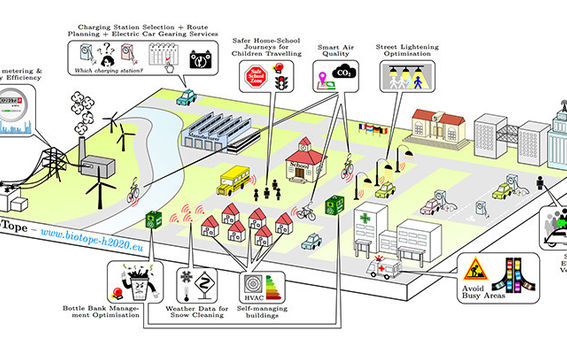Research project creates standards for the Internet of Things

The Open Messaging Interface project is funded by the Academy of Finland. Its total budget is 430 000 e and professor Kary Främling at the Computer Science Department is the project leader. The goal of the project is to enable systems that have been closed and separate to inter-operate with other systems as and when needed. The resulting new services can be expected to improve people's lives in many ways.
The goal is to build systems of systems on top of the separate information systems. They will help citizens predict, plan and optimize small and big choices of their lives. Open and standardized interfaces enable the collection of data from different systems and thereby faster reactions to various and changing situations.
- For instance in the temperature regulation of a house it will be possible to consider the inside and outdoor temperatures, weather forecasts, energy prices in the near future, as well as other useful information sources. The same principles can be used when buying a second-hand car - it will be possible to figure out the condition and the practical value of the car on the basis of the entire maintenance and driving history data, states professor Främling.
This project aims at providing a general reference implementation of standards, which would help in the deployment of the new standards. Utilization of standards is a prerequisite to the creation of a scalable Internet of Things.
Nodes create Internet of Things
- In the Internet of Things, devices and systems are nodes that provide data either for free or against payments. A node can be for example a server, a mobile phone, a car, a temperature sensor or some other information system, adds Främling.
- For instance when you drive to Helsinki, different systems, depending on the location of the car, can provide information on the road temperature, freezing of the road and accidents. Due to the open and standardized interfaces, the data is available both for the car and the driver, without a need for system integration or installation of new software. The system of the car is able to read and combine the data from all available systems. The data can also be subscribed for, for instance so that the data will be updated within the next 24 hours every time whenever a relevant change occurs, states Främling.
The vision of this project highlights a distributed way of seeing the Internet of Things. For instance the car owner manages the car her/himself, and the road service chooses which data and to whom it publishes and delivers from its own system.
- Faults or data transfer problems can hit the systems, for instance a sensor can break or calibration errors may occur. This is one of the reasons why it is not good to trust in a single system, concludes Främling.
The project relies on the Open Messaging (O-MI) and the Open Data Format (O-DF) official standards. The counterpart of the O-MI on the Web is the HTTP protocol, whereas the counterpart of the O-DF is the content description language HTML. O-MI and the O-DF have been published by The Open Group and developed by the Internet of Things Working Group. Kary Främling is the chair of the group and the main author of O-MI and O-DF standards. The O-MI and O-DF are based on ten years' work of more than ten different companies and research institutes.
- Published:
- Updated:
Read more news

Get to know us: Associate Professor Maria Sammalkorpi
Sammalkorpi received her doctorate from Helsinki University of Technology 2004. After her defence, she has worked as a researcher at the Universities of Princeton, Yale and Aalto.
Aalto computer scientists in ICML 2024
Computer scientists in ICML 2024
Getting bacteria into line
Physicists use magnetic fields to manipulate bacterial behaviour